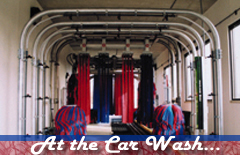This Saturday from 4pm to 6pm at Mt. Nebo Pointe your car can even join in on the Halloween spirit. Decorate the trunk of your car for Halloween, and your kids can go from car to car to collect delicious candy. There are even prizes for the car that is decorated best.
What’s “Trunk or Treat”? It’s a spooky good time for the whole family at Mt. Nebo Pointe!
Bring your kids, park your car at Mt. Nebo Pointe, decorate your trunk Halloween-style, and stroll from trunk to trunk collecting candy and prizes– it’s Trunk or Treat! It’s safe, different, and fun! And you can win prizes for your decorated trunk! Grand Prize:
$200 Target Gift Card, 2 free haircut tickets to Sport Clips at Mt.
Nebo Pointe, $25 Double Wide Grill Gift Card, and Great Clips Basket of
Product plus Four FREE haircuts.
Grand Prize:
$200 Target Gift Card, 2 free haircut tickets to Sport Clips at Mt.
Nebo Pointe, $25 Double Wide Grill Gift Card, and Great Clips Basket of
Product plus Four FREE haircuts.Two Runner Up Prizes: $50 Target gift card and 2 free haircut tickets to Sports Clips at Mt. Nebo Pt.
Parents: Display your trunk-tastic Halloween decorating skills (you must register to do so) or just bring your kids - in Halloween costumes, of course - and let them Trunk-or-Treat (no registration needed). Participation in the decorating contest is NOT required to bring your children to the event. However, children must be accompanied by an adult.
To enter your decorated trunk, click here to download a registration form. Register for FREE by sending your completed form to the email, fax, or address on the form. Space is limited to 100 cars so be sure to register early.
Kids: Show off your Halloween costume, and Trunk-or-Treat for candy and prizes among the decorated cars at Mt. Nebo Pointe! Pittsburgh’s Country Station, Y108 will be giving away candy, haunted house tickets and signed Pirates and Steelers merchandise from the Y108 van! Just remember, you must be accompanied by your parents if you’re Trunk-or-Treating.
For more information see Mt Nebo Pointe.






 Washing your car at home pollutes the environment — soap and road grime such as oils, tar, and dirt washed from your
Washing your car at home pollutes the environment — soap and road grime such as oils, tar, and dirt washed from your 



